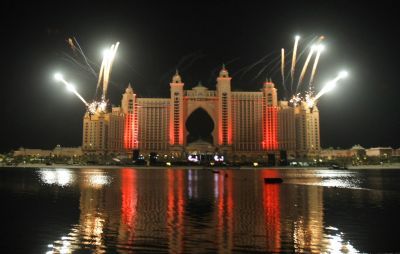A brief history of mega projects in Dubai

The Gulf emirate of Dubai, whose biggest state-owned group sparked global fears of a debt default in November when it asked for a six-month debt moratorium, has a history of vast imposing projects.
Burj Dubai, the world's tallest tower being inaugurated on Monday, is just the latest of these.
As recently as late 2008 Dubai was still announcing gigantic schemes like the 95-billion-dollar Jumeirah Gardens new town and a one-kilometre-high structure, Nakheel Harbour and Tower, in a 28-billion-dollar business district.
The iconic Palm Jumeirah development has seen thousands of apartments, villas and luxury hotels built on a huge artificial palm-tree shaped island.
The island's luxury "Atlantis, The Palm" hotel is a tourist attraction with 1,539 bedrooms, as is Burj Al-Arab, the only hotel anywhere claiming a seven-star rating.
However, only one of the three planned palm islands has been completed, while The World - a proposed collection of 300 islands forming a globe shape - is far from being realised.
Plans for Dubailand, a 64-billion-dollar theme park, are also at a standstill.
Market researchers estimate that projects worth up to 582 billion dollars, or 45 percent of the value of all developments, are on hold in Dubai or other members of the United Arab Emirates because of the global economic crisis.
But many older schemes have been completed.
Among them is Festival City, comprising 20,000 apartments, 50,000 offices, 3,500 guest bedrooms, 100 restaurants and two shopping centres.
Another tourist draw is the Mall of the Emirates, opened in 2005 and famous for Ski Dubai, the world's largest indoor ski slope.
Dubai has also been planning yet more shopping malls such as the one-million square-metre Mall of Arabia, scheduled for completion in 2016.
In terms of infrastructure, the opening of Al-Maktoum International, Dubai's second airport with a predicted capacity of 120 million passengers a year, has been put back to mid-2010.
The airport, near Jebel Ali port, is designed to be part of a 33-billion-dollar complex that includes a freight terminal with capacity of 12 million tonnes a year.
Join our commenting forum
Join thought-provoking conversations, follow other Independent readers and see their replies
Comments
Bookmark popover
Removed from bookmarks